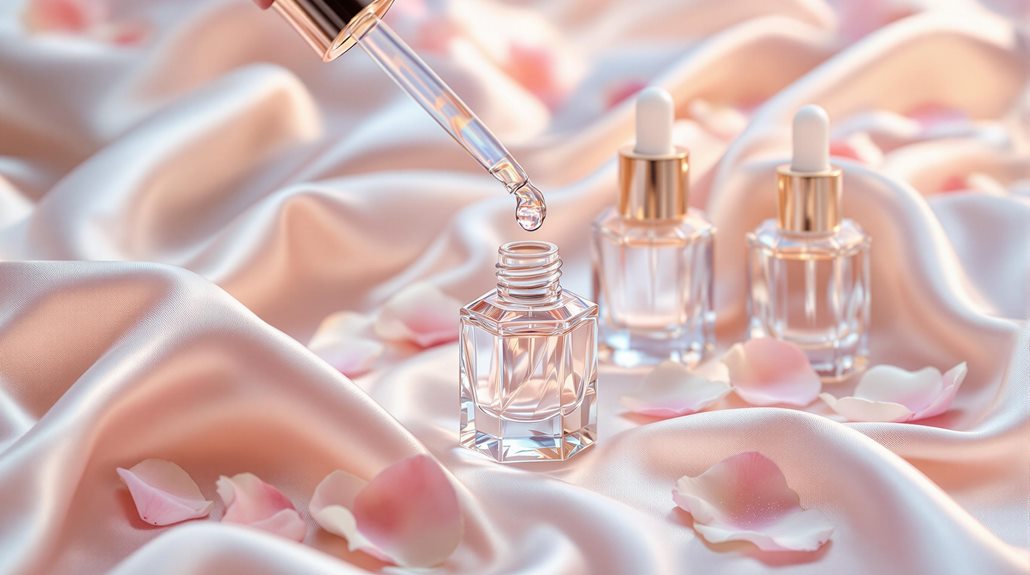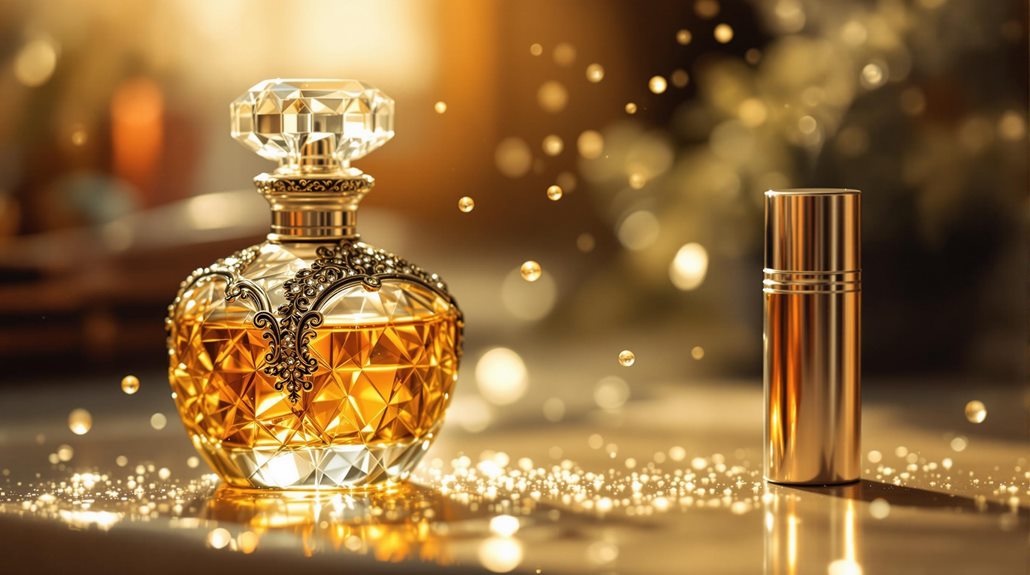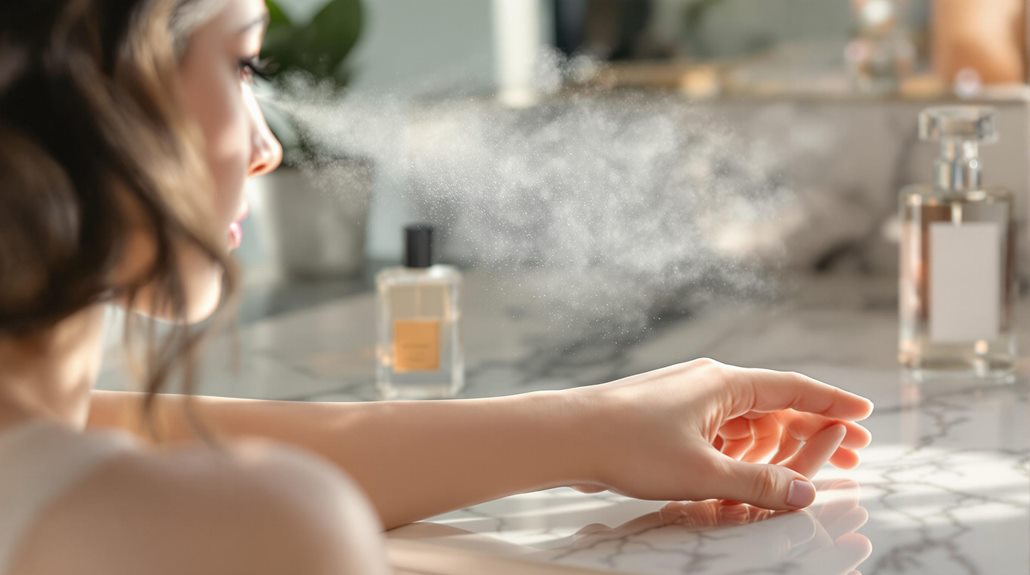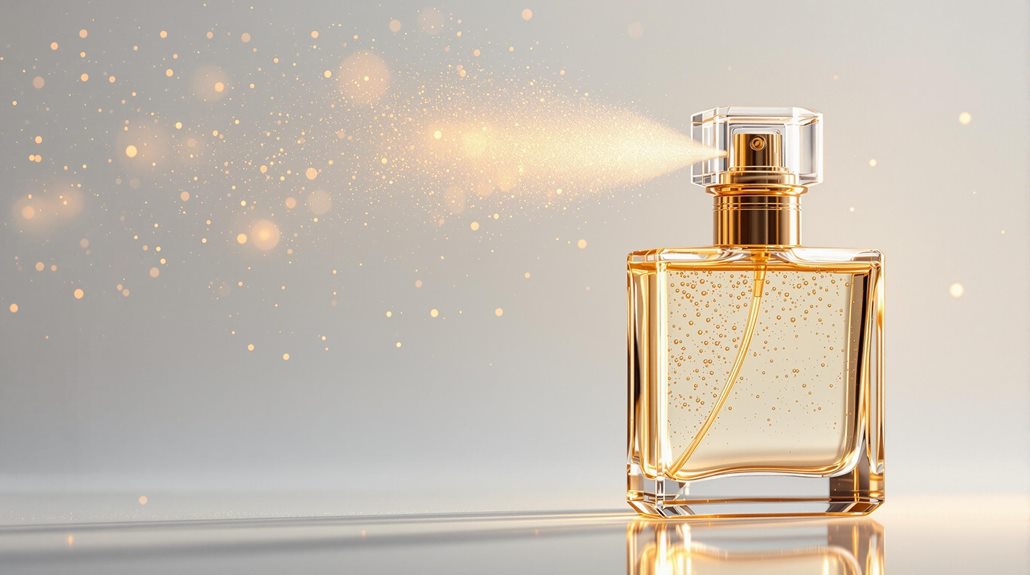How to Layer Perfume Like a Pro for Unique, Signature Scents
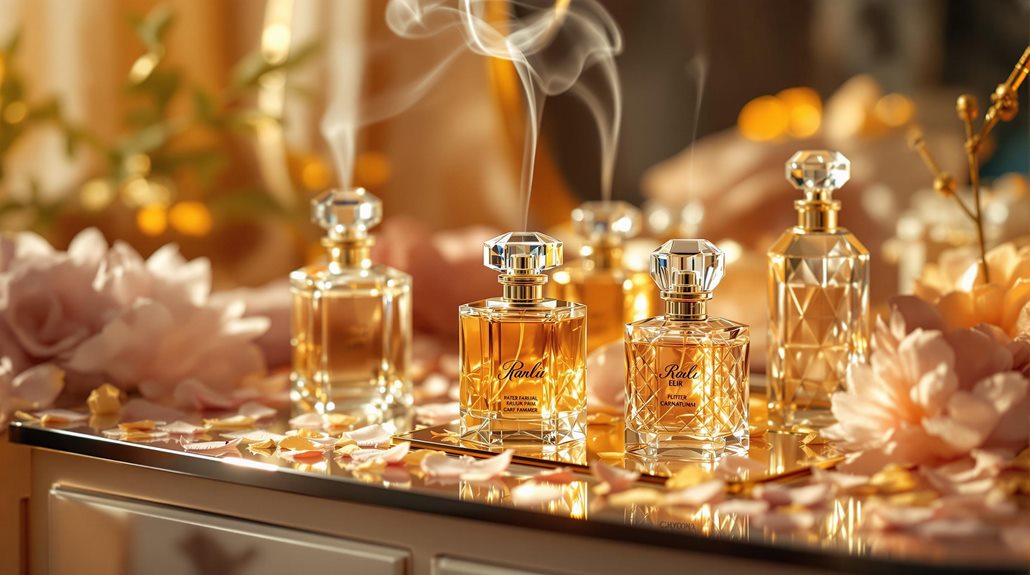
Start your perfume layering adventure by selecting a simple, single-note fragrance as your foundation, then build complexity with complementary scents. You'll want to apply fragrances to pulse points like your neck, wrists, and inner elbows, where body heat activates the scents naturally. Choose scents from the same fragrance family for foolproof combinations, or experiment with contrasting notes like fresh aquatic with warm woody for unexpected results. Always apply the heavier scent first, followed by lighter ones, and give each layer time to settle. Become proficient in these basics, and you'll uncover endless possibilities for creating your signature scent blend.
Understanding Perfume Layering Basics
Just as an artist blends colors to create a magnum opus, perfume layering involves combining different fragrances to create your signature scent. Understanding fragrance notes is essential - top notes hit you first but fade quickly, heart notes emerge after 15-30 minutes, and base notes linger longest, providing depth and longevity to your blend.
Before experimenting with perfume layering, you'll want to familiarize yourself with fragrance families. Florals, orientals, fresh, and woody scents react differently when combined. Start by testing how different scents interact with your body chemistry, as the same combination can smell entirely different on someone else. Apply fragrances to your pulse points - wrists, neck, and behind ears - where your body heat activates the scents.
A good rule of thumb is to pair lighter scents with heavier ones, keeping in mind that base notes will dominate the blend. You can layer complementary fragrances from the same family or create contrast by mixing different families. Remember to apply the heavier scent first, followed by the lighter one, allowing each fragrance to settle before adding the next.
Selecting Compatible Fragrance Notes
Now that you understand the fundamentals of layering, selecting compatible fragrance notes becomes your next creative challenge. When combining two perfumes, you'll want to focus on notes that naturally complement each other to create a scent that's both harmonious and unique to you.
- Choose a base fragrance with floral, woody, or citrus notes - these tend to work well together and provide a strong foundation for layering
- Pair fragrances from the same family (like multiple florals) for an easy, foolproof combination that's guaranteed to blend seamlessly
- Start with a simple, single-note perfume as your base note, then layer with a more complex scent to add depth and personality
- Experiment with contrasting scents, such as fresh aquatic notes paired with warm woody ones, for unexpected but balanced results
When layering different notes, always consider the dominant note in each perfume. This helps guarantee your scents go well together rather than competing for attention. You can create beautiful combinations by either staying within the same fragrance family or thoughtfully mixing contrasting elements. Remember, the goal is to create a balanced, personalized scent that reflects your style.
Essential Pulse Points

After selecting your fragrances, knowing where to apply them makes all the difference in how they'll perform throughout the day. When layering two fragrances, you'll want to concentrate your applications on key pulse points where your body's natural warmth will help diffuse the scents to create your signature scent.
Target your perfume applications to five essential pulse points: your neck, wrists, inner elbows, behind your ears, and the backs of your knees. These well-circulated areas allow both fragrances to bloom and project effectively, guaranteeing they complement one another throughout wear. When applying fresh notes first and placing your second perfume on top, use these same points for both scents to achieve the most harmonious blend.
Your body heat at these locations naturally warms the fragrance molecules, creating an intimate scent cloud that moves with you. This strategic placement guarantees maximum longevity and helps your layered combination develop more complexity over time. By focusing your fragrance layering on these pulse points, you'll achieve better projection and a more sophisticated blend that evolves beautifully throughout the day.
Base Scent Guidelines
Selecting the right base scent serves as the foundation for successful fragrance layering. When you're creating your signature scent combination, it's imperative to start with a light, uncomplicated fragrance that won't compete with additional layers. Think of your base scent as a blank canvas that allows you to build and experiment with different notes.
- Choose a simple, single-note fragrance that won't overwhelm your senses
- Look for light, airy scents that create space for additional layers
- Avoid complex fragrances that might clash with other scents
- Select a base that's versatile enough to pair with different perfumes
When you layer two different fragrances, your base scent should be subtle enough to complement rather than compete with other notes. A light vanilla, fresh citrus, or clean musk can serve as an excellent foundation for your layering endeavor. Remember that your base scent shouldn't be too assertive or complicated - it's meant to enhance and support the additional fragrances you'll layer on top. By starting with a simple, lightweight base, you'll have more flexibility to create unique combinations that truly reflect your personal style.
Building Complex Fragrance Combinations
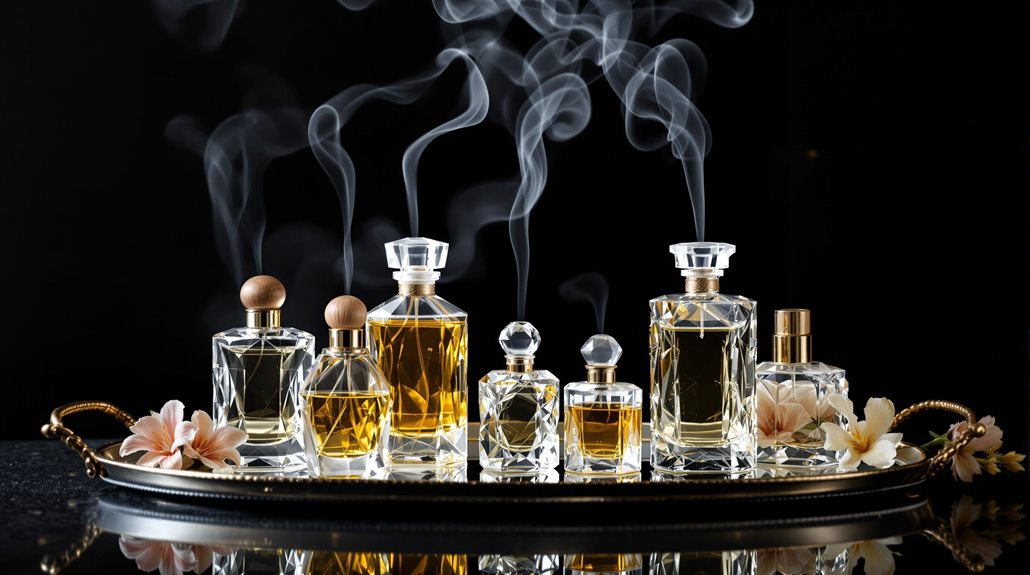
Building up from your base scent, you can create sophisticated fragrance combinations by strategically layering complementary notes. When mixing two or more fragrances together, start with a simple, lighter scent as your foundation, then add more complex notes to create something uniquely yours.
To create a signature scent that's both balanced and distinctive, focus on pairing fragrances within the same fragrance family. For example, combine different floral notes or layer various woody scents to guarantee harmony. When layering fragrances, always identify a dominant note in each scent you're using - this helps maintain coherence in your final blend.
If you're feeling adventurous, try combining different types of scent families. Pairing fresh citrus with warm amber or sweet vanilla with crisp herbs can create unexpected yet alluring results. The key is to experiment thoughtfully, paying attention to how the different notes interact. Remember that opposing scents can smell different throughout the day as they develop on your skin, so take time to observe how your combinations evolve. This process of exploration will help you perfect your unique fragrance blend.
Seasonal Layering Strategies
Nature's changing seasons provide perfect inspiration for adapting your fragrance layering strategy throughout the year. As temperatures and moods shift, you'll want to adjust how you layer perfumes to create seasonally appropriate combinations that complement the atmosphere around you.
- Summer calls for fresh citrus or floral top notes layered over light musky bases - spray one at a time to create an energizing, cooling effect
- Fall welcomes warm spices like cinnamon paired with earthy patchouli or sandalwood - layer two or three scents to capture autumn's cozy essence
- Winter demands rich vanilla or amber notes combined with smoky incense or fir bases - build deep, warming fragrances perfect for cold days
- Spring begs for delicate florals like jasmine layered over fresh green or aquatic foundations - create uplifting combinations that mirror nature's renewal
Play around with the intensity of each layer to find your perfect seasonal balance. Remember that different weather conditions can affect how perfumes interact and project. Start with lighter applications and gradually build up until you achieve the desired effect. By thoughtfully combining complementary scents according to the season, you'll create unique signature fragrances that evolve beautifully throughout the year.
Common Layering Mistakes

Despite the artistry of perfume layering, many fragrance enthusiasts make avoidable mistakes that can diminish their scent combinations. One of the most common layering mistakes is combining two or more scents without first testing them individually and together on your skin. What smells appealing separately might create something unpleasant when mixed.
You'll want to avoid spraying fragrances simultaneously, as this prevents you from controlling the intensity of each scent. Instead, apply them one at a time, allowing each layer to settle. Another error is pairing a stronger scent with a delicate one, as the powerful fragrance will overwhelm the subtle notes. When fragrance cocktailing, choose scents of similar intensity that complement each other well together.
Being too heavy-handed with applications can create an overwhelming result. Start with lighter amounts and build gradually. Don't make scent-based decisions purely from smelling the bottles - fragrances react differently with your skin chemistry. Finally, rushing the layering process can lead to muddled results. Give each fragrance time to dry and develop before adding another layer, ensuring a harmonious blend that lasts throughout the day.
Making Your Signature Scent Last
Creating a long-lasting layered fragrance requires strategic application and proper maintenance techniques. When you're layering scents like Oud Eau de and Rose Prick Eau de, start with an unscented moisturizer as your base. Scent is something that needs proper care to Last Longer, and a moisturized skin surface helps lock in the fragrance molecules.
- Apply fragrances to well-moisturized pulse points for maximum projection and longevity
- Store your perfumes in a cool, dark place to maintain their integrity and prevent degradation
- Avoid rubbing your wrists together after application, as this breaks down the scent molecules
- Choose between spraying or dabbing based on the perfume's concentration and desired effect
Conclusion
You've now got all the tools to create your own unique fragrance signature through expert layering techniques. Remember to start with complementary scents, apply strategically to pulse points, and adjust your combinations seasonally. Don't be afraid to uncover - that's how you'll find your perfect blend. With practice and patience, you'll develop a distinctive scent that's uniquely yours and lasts throughout the day.

